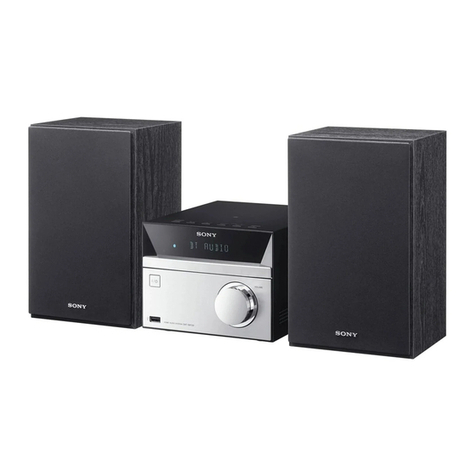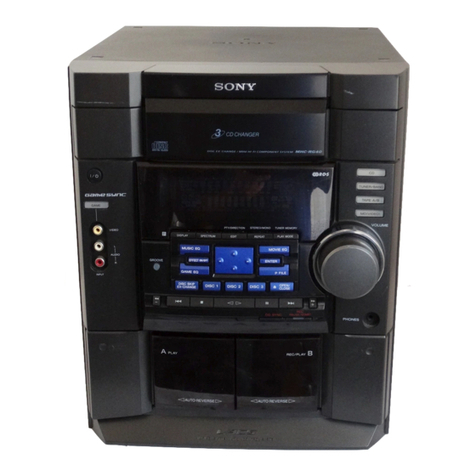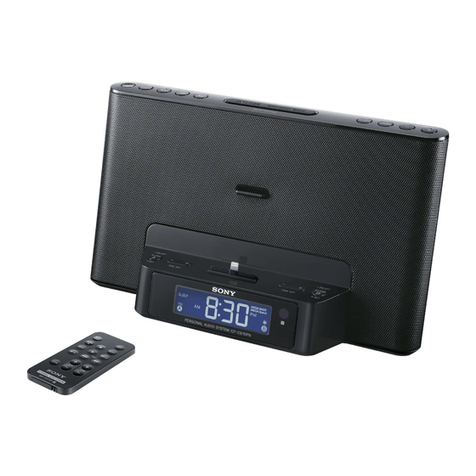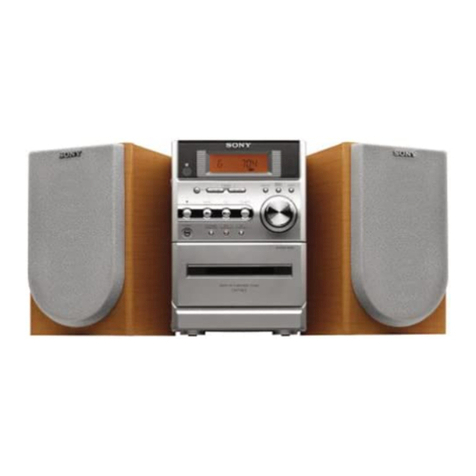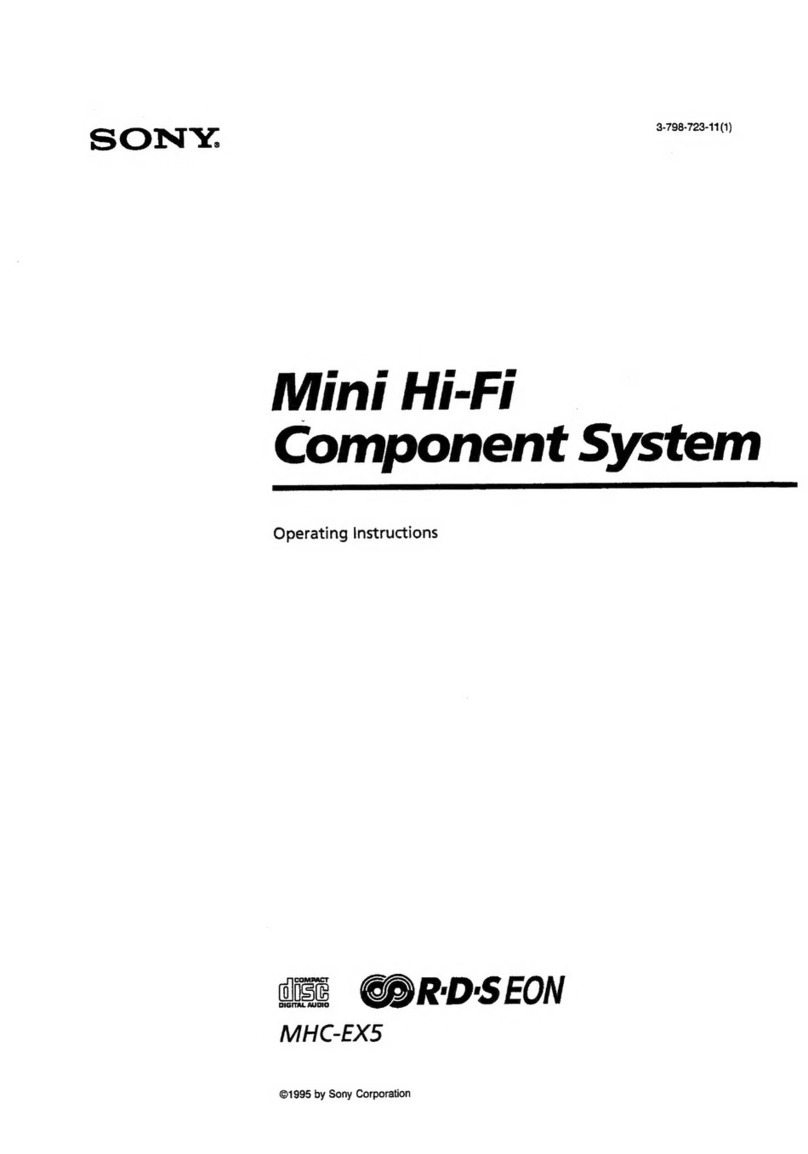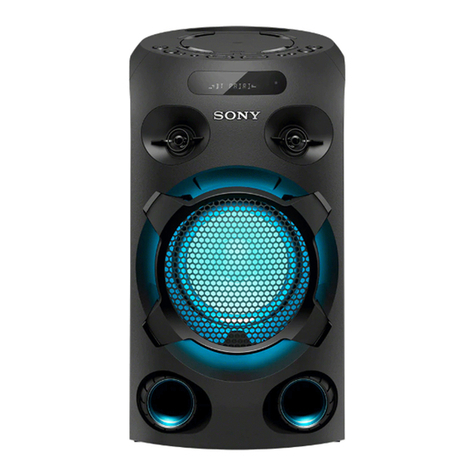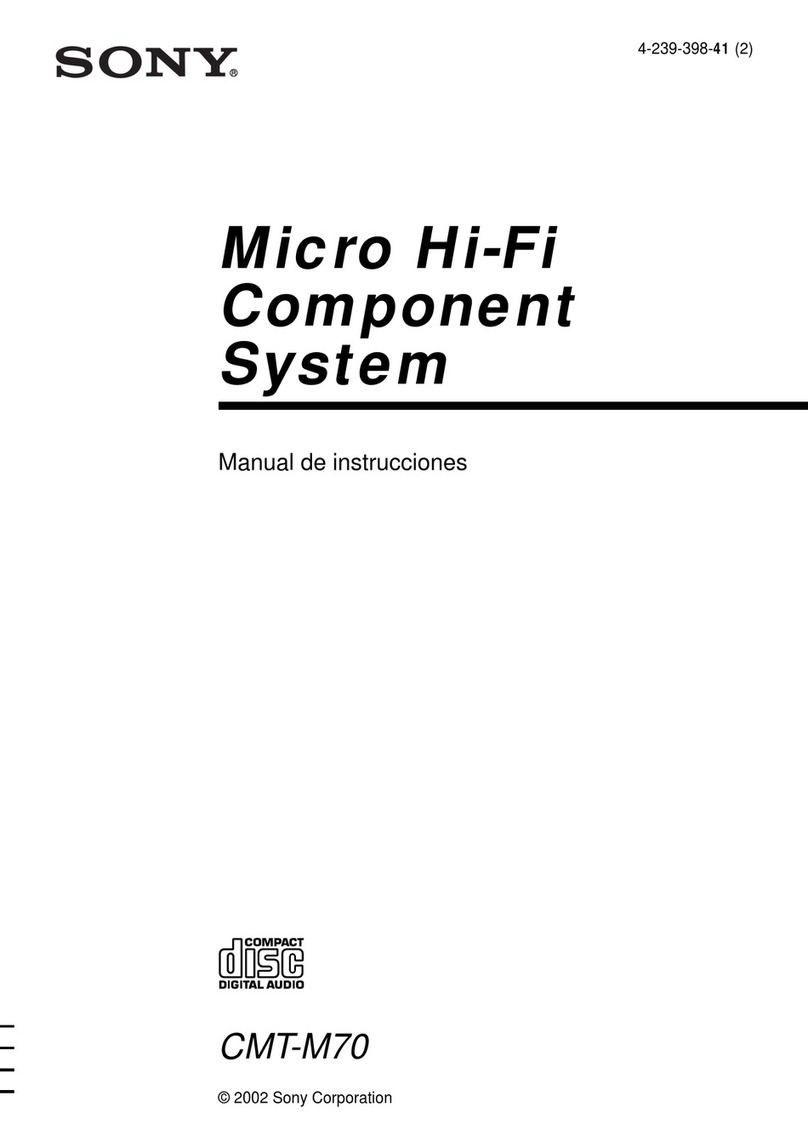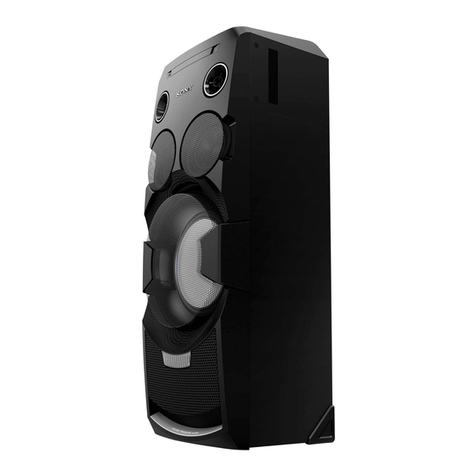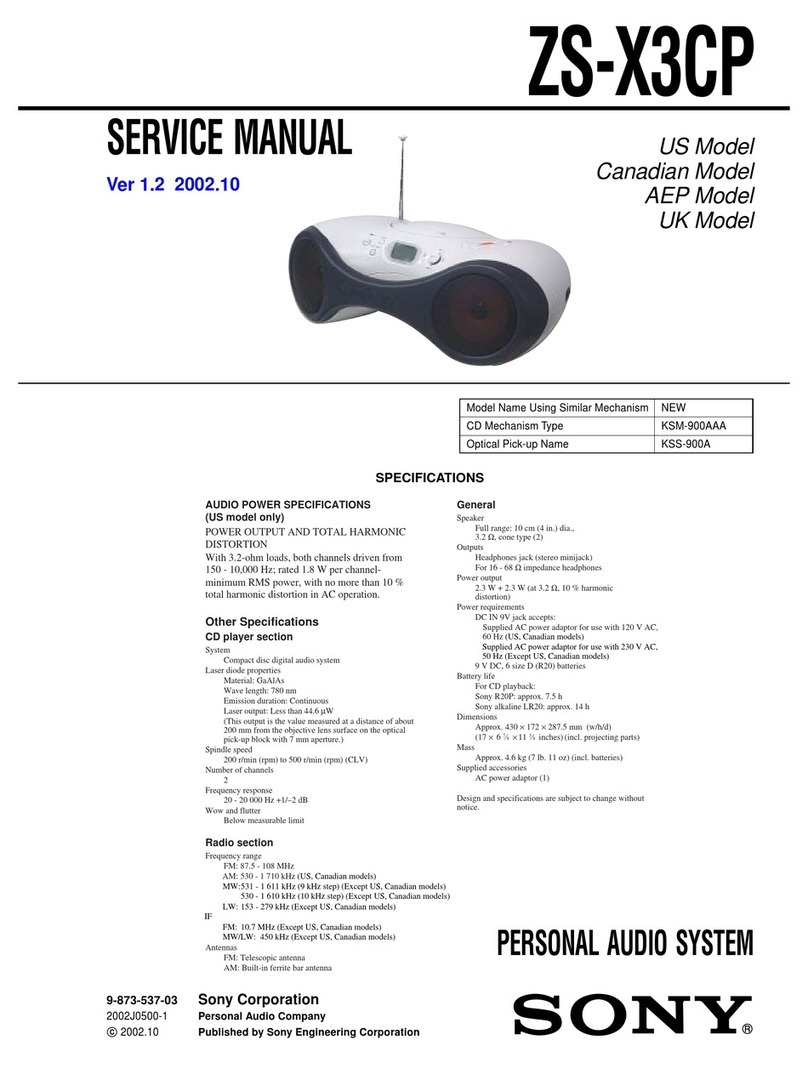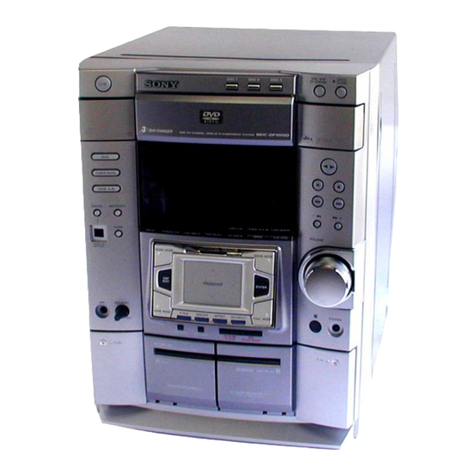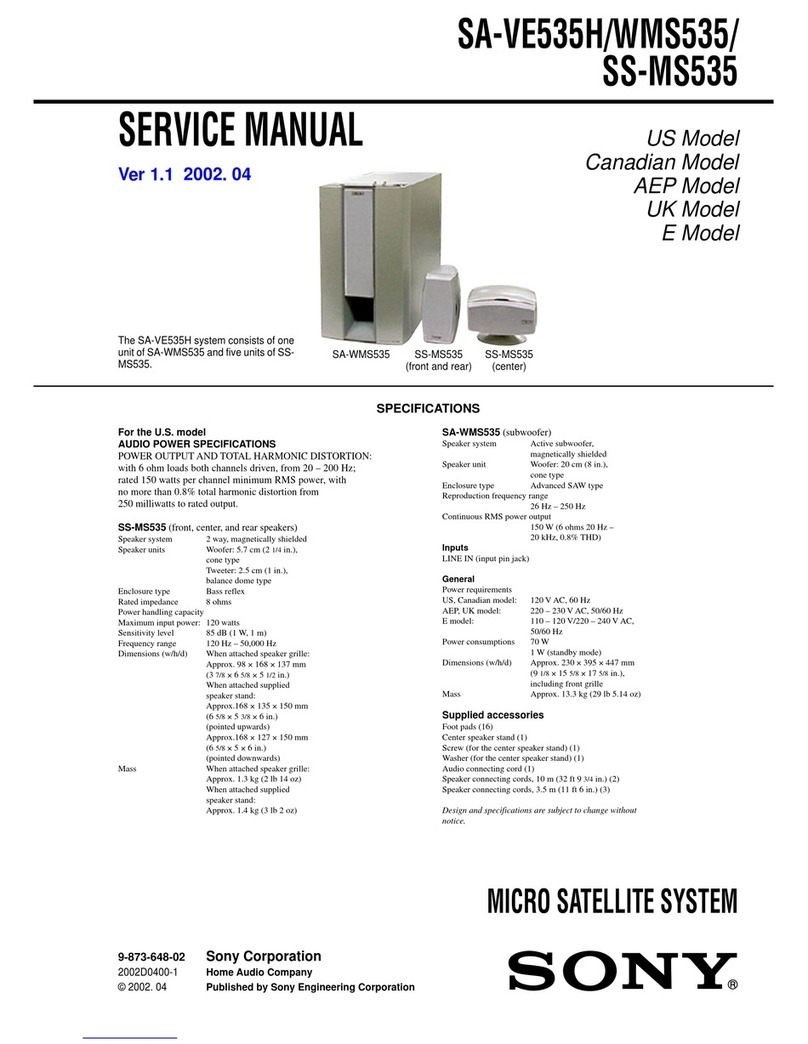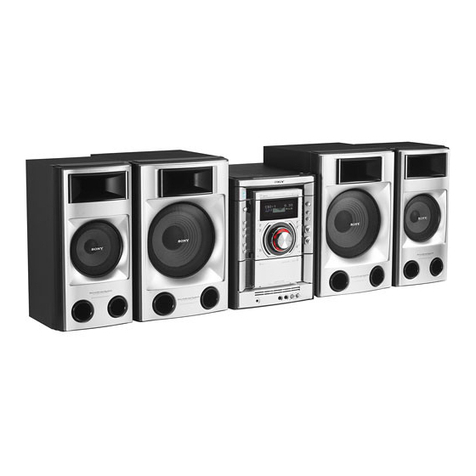
CX-JS3
3
TABLE OF CONTENTS
1. SERVICING NOTES ................................................ 4
2. GENERAL
Location of Controls ....................................................... 6
3. DISASSEMBLY
3-1. Disassembly Flow ........................................................... 8
3-2. Case (SIDE-L/R)............................................................. 9
3-3. Case (Top) ....................................................................... 9
3-4. Tray Panel........................................................................ 10
3-5. CD Mechanism Deck (CDM74S-K6BD72)................... 10
3-6. Front Panel Section ......................................................... 11
3-7. Mechanical Deck (CWM43FF13) .................................. 11
3-8. Rear Cabinet Section ...................................................... 12
3-9. PT Board, MAIN Board.................................................. 12
3-10. Table Assy ....................................................................... 13
3-11. Motor (TB) Board ........................................................... 13
3-12. Motor (LD) Board ........................................................... 14
3-13. Base Unit (BU-K6BD72)................................................ 14
3-14. Motor Gear Assy (Sled) (M701), BD Board .................. 15
3-15. Optical Pick-up (KSS-213D) .......................................... 15
4. TEST MODE.............................................................. 16
5. ELECTRICAL ADJUSTMENTS
CD Section ...................................................................... 17
6. DIAGRAMS
6-1. Block Diagram – CD Section – ..................................... 18
6-2. Block Diagram – TUNER/TAPE/PANEL Section –..... 19
6-3. Block Diagram –AMP/POWER SUPPLY Section – ... 20
6-4. Note for Printed Wiring Boards and
Schematic Diagrams ....................................................... 21
6-5. Printed Wiring Board – BD Section – ........................... 22
6-6. Schematic Diagram – BD Section – .............................. 23
6-7. Printed Wiring Boards – CHANGER Section –............ 24
6-8. Schematic Diagram – CHANGER Section – ................ 25
6-9. Schematic Diagram – MAIN Section (1/4) –................ 26
6-10. Schematic Diagram – MAIN Section (2/4) –................ 27
6-11. Schematic Diagram – MAIN Section (3/4) –................ 28
6-12. Schematic Diagram – MAIN Section (4/4) –................ 29
6-13. Printed Wiring Board – MAIN Section – ...................... 30
6-14. Printed Wiring Board – HP Section – ........................... 31
6-15. Schematic Diagram – HP Section – .............................. 31
6-16. Printed Wiring Board – PANEL Section – .................... 32
6-17. Schematic Diagram – PANEL Section – ....................... 33
6-18. Printed Wiring Boards – KEY Section –....................... 34
6-19. Schematic Diagram – KEY Section – ........................... 35
6-20. Printed Wiring Board – PT Section – ............................ 36
6-21. Schematic Diagram – PT Section –............................... 37
6-22. IC Pin Function Description ........................................... 41
7. EXPLODED VIEWS
7-1. Case Section .................................................................... 43
7-2. Front Panel Section-1...................................................... 44
7-3. Front Panel Section-2...................................................... 45
7-4. Front Panel Section-3...................................................... 46
7-5. Front Panel Section-4...................................................... 47
7-6. Chassis Section ............................................................... 48
7-7. CD Mechanism Deck Section-1
(CDM74S-K6BD72) ....................................................... 49
7-8. CD Mechanism Deck Section-2
(CDM74S-K6BD72) ....................................................... 50
7-9. CD Mechanism Deck Section-3
(CDM74S-K6BD72) ....................................................... 51
7-10. Base Unit Section (BU-K6BD72) .................................. 52
8. ELECTRICAL PARTS LIST ............................... 53



